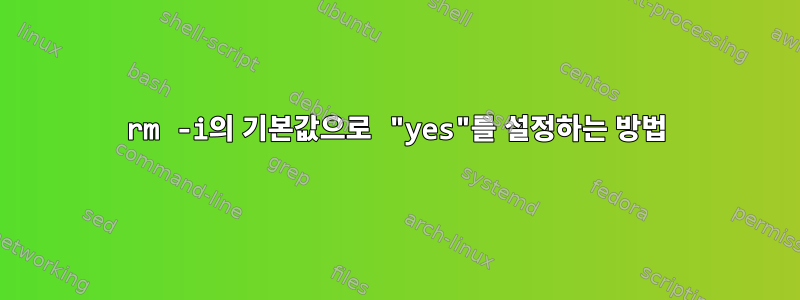
삭제된 파일의 긴 목록을 보고 싶습니다. 별로 중요하지 않기 때문에 실수로 일부 파일을 삭제해도 문제가 되지 않습니다. 하지만 여전히 일부 파일을 저장하고 싶습니다.
전화를 걸고 rm -i ./*프롬프트를 수신 rm: remove regular file 'myfile'?하지만 기본값을 "예"(Y/n)로 설정하려면 어떻게 해야 합니까?
답변1
rm함수든 스크립트든 주변에 자신만의 레이어를 만드는 데 방해가 되는 것은 없습니다 . (저는 개인적으로 스크립트를 선호합니다.)
파일에 복사하고 yrm디렉터리 $PATH(예 /usr/local/bin: )에 넣은 다음 실행 가능하게 만듭니다( chmod a+x /usr/local/bin/yrm).
#!/bin/sh
#
fails=0 # Number of failures is presented as exit status
for item in "$@"
do
# Skip directories
if [ -d "$item" ]
then
printf '%s: skipping directory\n' "$item" >&2
fails=$((fails+1))
continue
fi
# Prompt the user
printf "%s: remove regular file '%s' (Y/n)? " "${0##*/}" "$item" >&2
read yn || exit $((fails+1))
# Either no response or "y" is good enough for deletion
if [ -z "$yn" ] || [ y = "$yn" ]
then
rm "$item" </dev/null # No -f so we expose error messages
[ $? -gt 0 ] && fails=$((fails+1))
fi
done
# Report failures (0=success)
exit $fails
그런 다음 플래그와 하나 이상의 파일 없이 호출할 수 있습니다. 예를 들어,
yrm *.txt
답변2
Case 문을 사용할 수 있습니다.
# path of file
file_path=$(ls -ltr | grep "^-" | awk -F" " '{ print $9 }' | grep -i ".txt*")
read -p "enter yes for removing files $file_path" user_inp
# -p :- for user prompt
case ${user_inp}
in Yes | yes | YES )
rm $file_path
;;
*)
echo "you don't want to delete that file"
esac


